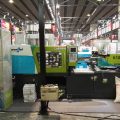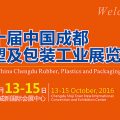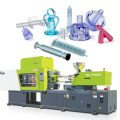At the World PM2016 Congress & Exhibition, Sigma Engineering will present a new approach to minimize particle segregation in Metal Injection Molding (MIM).
Simulation is a well-established tool in MIM, as it accurately predicts flow and thermal related effects in the green part molding. In recent years, SIGMASOFT Virtual Molding has developed a number of new features to predict particle segregation, one of the most common problems associated to MIM.
Particle segregation causes surface defects, and once the green part is sintered, the differences in density lead to inhomogeneous shrinkage and therefore to warpage. Particle segregation is mainly a process-driven effect, caused by shear. Therefore, process parameters and part gating are critical.
At this year’s WorldPM, Timo Gebauer, Sigma’s Chief Technical Officer, will show how autonomous optimization can be used to reduce the appearance of particle segregation.
“To understand the problem it makes sense to run various simulations in a Design of Experiments (DOE). This can help figuring out the correlations of the different boundary conditions and the influence on the observed result,” explained Gebauer.
In the optimization, an even particle distribution is the main goal, and both filling time and gate geometry are varied in a first study.
To make the simulation feasible for an industrial part and mold, an approach called “autonomous optimization” is used. Using a similar strategy to the one previously described, the problem is solved in parts through several optimization generations. This reduces the amount of calculations necessary to find an optimum solution.
Sigma’s presentation will explain how the approach can be used to minimize particle segregation in real products.
World PM2016 Congress & Exhibition will take place in Hamburg, Germany from October 9-13.






